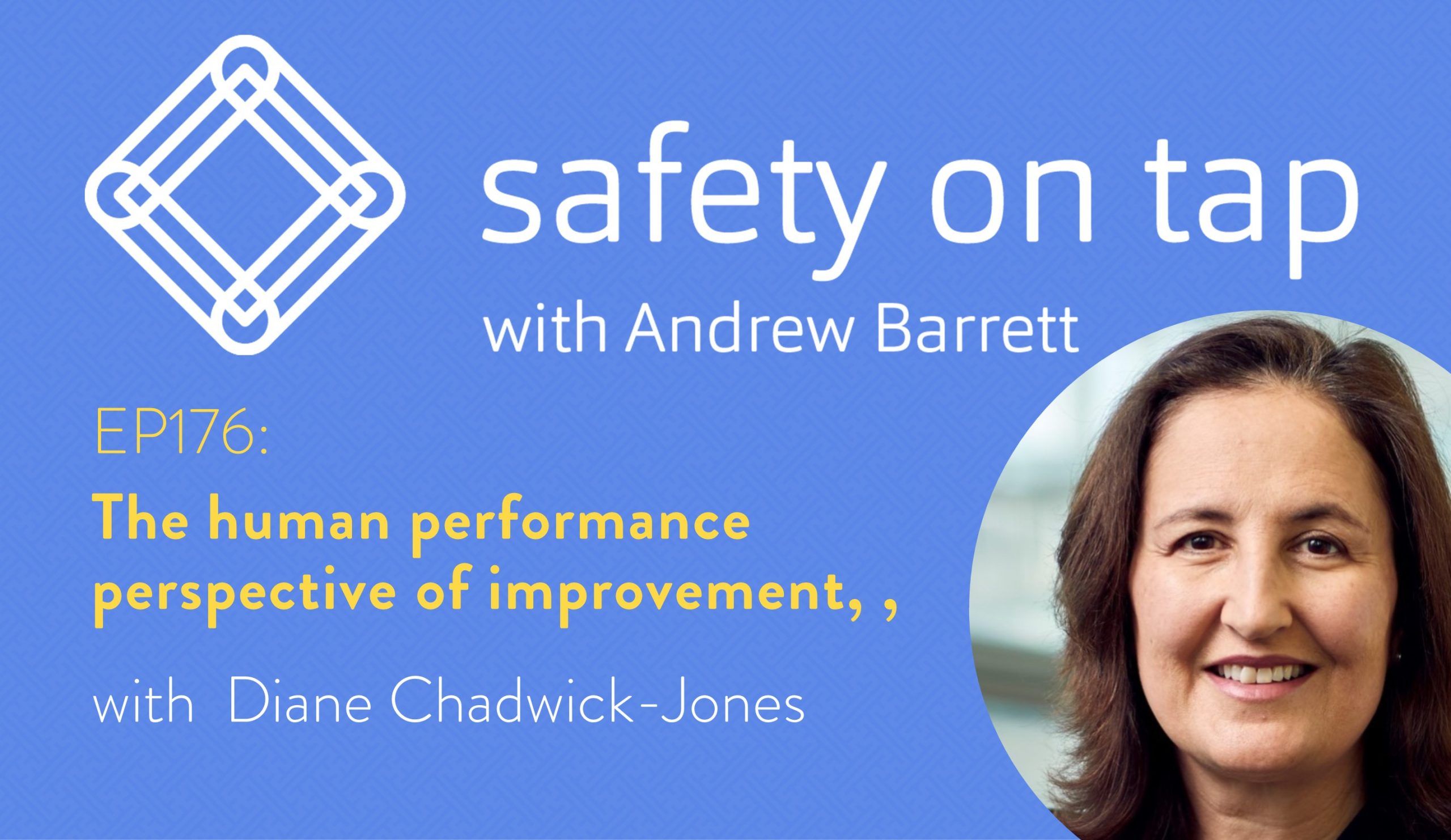Many of us have thought, or discussed the idea that we need to talk less about health and safety, or at least use a different term to describe what we are trying to improve at work every day. Human performance is one such alternative, and as you’ll hear, is not just focussed on humans and is not just about health and safety.
Hey, it’s Andrew, and this is Safety on Tap.
Since you’re listening in, you must be a leader wanting to grow yourself and drastically improve health and safety along the way. Welcome to you, you’re in the right place. If this is your first time listening in, thanks for joining us and well done for trying something different to improve! And of course welcome back to all of you wonderful regular listeners.
Diane Chadwick-Jones is the former Director, Human Performance for BP. She is a graduate of Imperial College, London and had an extensive career in BP, spanning many businesses and functions including Refining, Exploration & Production and Chemicals, working in Belgium, Brazil and Egypt in operations and safety roles.
In her positions related to Safety Culture and Human Performance, she was instrumental in the refresh of the BP Values, and delivering cultural change and safety improvement including operationalizing a “systems thinking” approach by improving the way work is set up to reduce the possibility of mistakes and make work more effective.
Diane now focuses on education, mentoring, research and advocacy.
This episode is made possible by our mission of enabling better learning that improves performance in your organisation.
We all know that we need to use our safety activities to learn how to improve, right? Risk assessments are proactive ways to engage your people in imagining possible future scenarios, investigations are meant to teach us about lessons from past incidents, and safety committees are designed to provide workers the voice to give their expert input to the way work is managed safely.
But how many of us have risk assessments which struggle to really engage people, investigations which keep saying the same things and not much is changing, or Committee’s which are frankly, sh*tty?
We teach people how to help their organisations to learn intentionally, which means risk workshops that have people volunteering to participate, responses to incidents which generate real learning and improvement beyond the same old corrective actions, and employee consultation which people rave about.
All of these things suffer the same problems, and have the same four steps you can follow to generate learning. I’ve created a short video describing these four problems and four steps you can take to fix them. If you want to see the video, visit safetyontap.com/four
Here’s Diane:
I definitely appreciated listening to that conversation more than once, its positively brimming with insights.
But I do try and pick out just a few that resonate with me. These might not be the same as yours, so instead of just letting this play through, why not press pause, think about or jot down three takeaways of your own, and let’s compare notes? Ok? Done? Let’s play.
Here’s my three takeaways from that chat with Diane Chadwick-Jones:
Takeaway #1: The language matters! If you googled it and we hasn’t discussed the meaning of human performance, you might walk away thinking we were talking about enhanced physiology in workers. The words we use are not enough, we need to co-create, to share, and to keep alive the meaning of our words. That’s true whether it’s human performance, safety, care, wellbeing or whatever – don’t assume that anyone know what you mean, create the meaning together.
Takeaway #2: Diane made a comment, almost in passing, about the use of data. Human-oriented approaches to safety sometimes throw the baby out with the bathwater, including data. Data is a powerful language for senior leaders. Just make sure that the way you use data is robust and defensible like Diane gave us examples of, in contrast to lots of safety data which is flimsy at best.
Takeaway #3: You can’t diagnose and then make a prescription for everything. Diagnostic approaches have so many assumptions that don’t work in complex systems, and in sociotechnical contexts. Dialogic approaches, that is using language and dialogue, work really well to start a change process even before anyone realises change is happening.
Diane also mentioned Alcoa CEO Paul O’Neill, now an infamous case study in leadership on safety. I’ve hyperlinked to my favourite video clip from Paul in the show notes which you can access at safetyontap.com/ep176, along with a free transcript of this episode.
Thanks so much for listening. Until next time, what’s the one thing you’ll do to take positive, effective or rewarding action, to grow yourself, and drastically improve health and safety along the way? Seeya!
Here’s your FREE reflection worksheet from this episode.
And here’s your FREE download of the full transcript of this episode.
Feel free to share this with your team/colleagues!


Very good podcast, very helpful.
Interesting.
Indeed! Thank you
I loved this podcast, Dianne is a wealth of knowledge I want to soak up. Thanks Andrew for this one.
Couldn’t agree more Wil! My pleasure